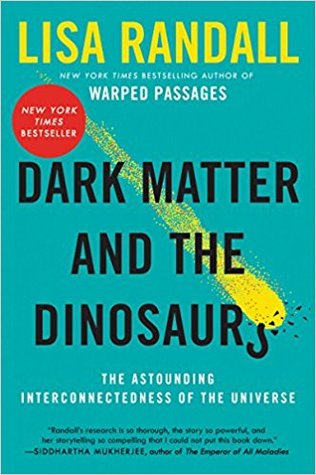Further investigation shows that giant stars formed first—but they either quickly exploded into supernovae, releasing the first heavier elements into the Universe, or they collapsed into black holes.
I am still not sure how we can distinguish dark matter from black holes given the tools we have -- both bend light around them, and have gravitational effects, and both would contribute mass to a distant galaxy without increasing the brightness of the galaxy.
Are there tell-tale signs of a black hole, which a blob of dark matter would not have? Almost certainly, but Dr. Randall hasn't mentioned any of this.


